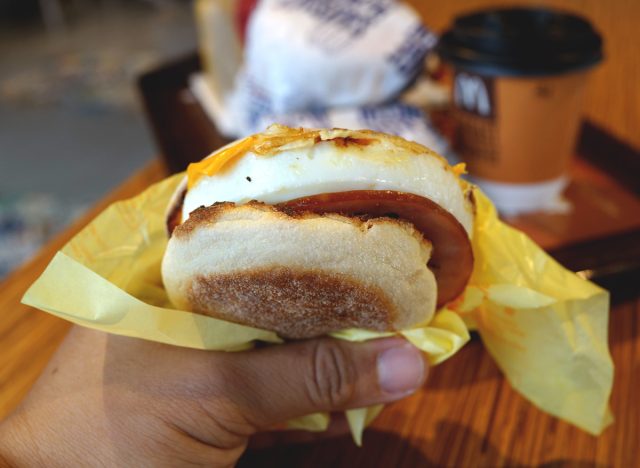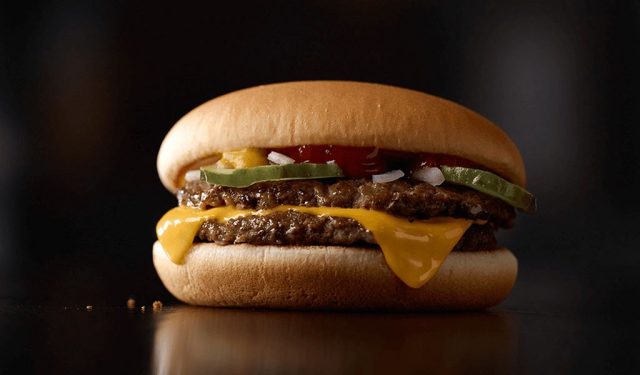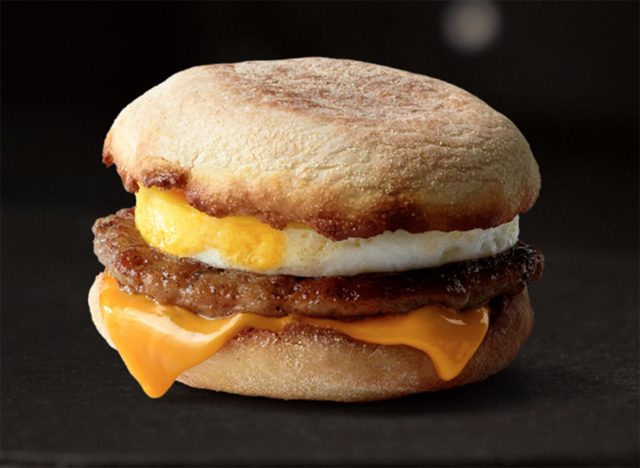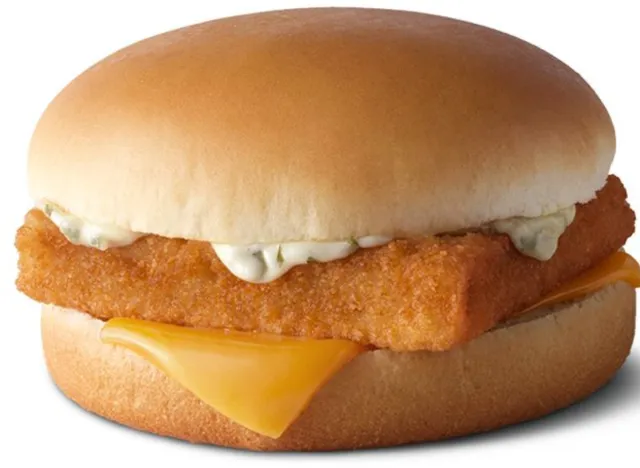4 High-Protein McDonald’s Orders That Support Muscle After 50

There’s no denying that McDonald’s is a fan favorite when it comes to fast food, but it’s not known to be the healthiest. While the golden arches are globally recognized for cheap, quick meals, if you’re following a healthy diet your choices are limited.
Although the menu isn’t exactly full of salads, when you’re in a pinch and want a high-protein meal that isn’t terrible for you, there are a few options.
“There are smart swaps that help make a stop at McDonald’s much more compatible with your fat-loss or maintenance goals—without derailing your nutrition plan,” says Mary Sabat MS, RDN, LD, who is also a personal trainer.
And those options include protein, which is essential throughout every stage of life, but especially as we age.
Here are four things to order at McDonald’s that won’t kill your diet and will give you a protein boost.
Why You Need More Protein 50

Getting in your daily dose of protein is key to maintaining overall health and it’s essential to boost your intake as we age. While protein is important at all stages, it’s crucial after 50.
“As we age, and as organ function declines, it is even more important that our bodies have what they need to make what they need to produce their specific sets of molecules and enzymes,” Dr. Frank Dumont, MD, FACP, and Senior Medical Director at Virta Health tells Eat This, Not That!
After 35, we start to lose muscle mass and that generally speeds up around 50.
“This can decrease our functionality and quality of life, can predispose us to injury, and can worsen our overall metabolic health (which can predispose us to conditions such as diabetes, heart disease and even Alzheimer’s Disease),” per Dr. Dumont.
He explained, “In addition to exercise and resistance training, adequate protein intake is necessary for muscle mass preservation.”
According to Stanford Lifestyle Medicine, adults aged 50 and over should consume 1.2 – 1.6 grams of protein/kg of body weight per day (0.54 – 0.72 grams/pound body weight per day).
So for an adult weighing 165, 90-120 grams of protein is recommended.
Egg McMuffin (No Muffin)

Calories
: 310 or an estimated 170 without the muffinFat
: 13g (Saturated fat: 6g)Sodium
: 770 mgCarbs
: 3g (Fiber: g , Sugar: g)Protein
: 17gThe Egg McMuffin (No Muffin) is a popular breakfast choice and when modified, Sabat recommends it.
“Skip the muffin and stick with the essentials—an egg, lean Canadian bacon, and a slice of cheese,” Sabat says. “This simple change significantly reduces the carbs while still offering a satisfying, protein-rich start to your day. It’s a great option to keep blood sugar stable and hunger in check without sacrificing flavor. You can even add a second egg or bacon if you need more protein.”
McDouble (No Bun)

Calories
: 370, or an estimated 290 without the bunFat
: 20g (Saturated fat: 9g)Sodium
: 920mgCarbs
: 32g (Fiber: 2g, Sugar: 6g)Protein
: 22gThe McDouble is a longtime menu staple and Sabat also recommends this option for those looking for a high protein choice.
“Ordering a McDouble without the bun gives you two beef patties and a slice of cheese, making this a great low-carb, high-protein choice,” she says. “It’s filling and flavorful without the extra carbs or sugars found in the bun and sauces. Ask for mustard instead of ketchup to keep added sugar to a minimum, and add lettuce or tomato for volume if available.”
Sausage McMuffin (No Muffin)

Calories
: 260 estimated without the muffinFat
: 24 g (Saturated fat: g)Sodium
: 500mgCarbs
: 2g (Fiber: g, Sugar: g)Protein
: 9 gAnother classic breakfast option Sabat suggests is the Sausage McMuffin.
“By removing the English muffin, you’re left with a sausage patty and a slice of cheese, giving you a simple and compact protein-fat combo that works well for low-carb eating,” she says.
“It’s not fried, and while the sausage is processed, it’s a better option when you’re looking to avoid breaded or sugary choices,” Sabat explains. “You can double up for a heartier meal or pair it with an egg for a more balanced profile.”
Filet-O-Fish (No Bun, No Tartar Sauce)

Calories
: 240 an estimate with no bun or tartar sauceFat
: 17g (Saturated fat: g)Sodium
: 350mgCarbs
: 11g (Fiber: g , Sugar: g)Protein
: 11gThe Filet-O-Fish is made with Alaskan Pollock, is low in calories and has a decent amount of protein.
“While the breaded fish fillet isn’t ideal for strict low-carb plans, this option becomes workable when you remove the bun and skip the tartar sauce,” Sabat explains. “It still provides decent protein and keeps the fat and carbs in check. If you’re craving seafood and looking to stay light, this is a reasonable backup.”